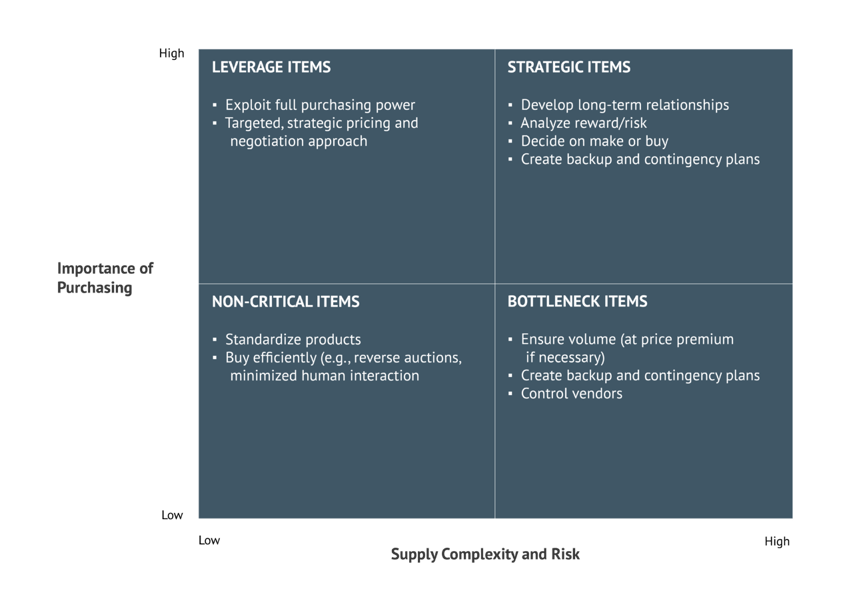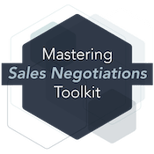Reverse auctions (also called e-auctions) are a common negotiation technique used more and more frequently by large organizations. For the most part, sellers loathe reverse auctions.
The point of a reverse auction is to drive down supplier prices to their absolute lowest while driving expectations of suppliers to their highest. As the process (typically) removes human interaction from the equation, sellers often feel at a complete loss to do anything but participate in the auction or walk away.
There's a lot more to it. Below you'll find negotiation strategies you can use before and during the reverse auction process to get the best results for you and your buyer.
Understanding Reverse Auctions
Because procurement groups tend to share little information with sellers, sellers often think purchasing groups are not strategic. In fact, there's quite a bit of procurement strategy on when to use or not use a strategy like a reverse auction.
"Purchasing Must Become Supply Management" was published in 1983 in the Harvard Business Review, outlining a more strategic approach to purchasing, including a graphic like the one below on the classic Stages of Purchasing Sophistication:
|
Adapted from Stages of Purchasing Sophistication1 |
|
|
In the bottom left box, where the importance of purchasing and the supply complexity and risk are low, the idea is to drive down price and buy as efficiently as possible. This is where reverse auctions are typically employed, often with success for the buyer. It's simple microeconomics: if the supply is available and it's truly a commodity, there's no reason a buyer should pay anything over the lowest price.
The more complex and risky the supply, and the more important the purchase, the less reverse auctions should be used.
"Should be" being the operative phrase. Buyers make mistakes with reverse auctions that do them a great disservice.
Construction Example
One article directed at the purchasing community for how to use reverse auctions states, "Here's how a reverse auction works for you if you are a buyer: let's pretend that you wanted to build a house. You go out and get three different offers from three different home builders."
It goes on to state that the benefits to using this approach include pitting competitors against each other, putting pressure on the management of the vendor company, putting pressure on sellers because they're "almost there" (a tactic we call One Last Thing), and driving higher concessions because sellers have invested so much in the process so far.
Here are some problems with this example:
- The purchase is important! When you're building a home for your family, how it turns out and the process of working through the project as a homeowner are important. Construction projects can affect your life significantly, often to the negative.
- The risk is huge!
- Quality problems now and in the future can cause financial stress, emotional stress, and real health issues
- Cost overruns are common
- Scheduling problems and late delivery are common
- Frustrations stemming from bad relationships with contractors are common
- Lawsuits happen
Home construction providers might look similar, but anyone who has had a bad experience with a home contractor knows about the colossal potential for financial and emotional stress, and years of disappointment.
Reverse auctions might be okay for buyers in some areas, but even the advice for how to apply them is dreadfully misguided. It's contingent upon sellers to help buyers buy in a better way, essentially applying Insight Selling to the purchasing process itself.
When facing reverse auctions, sellers should keep in mind the 6 Essential Rules of Sales Negotiation. Here they are, along with strategies sellers can employ to make sure they get the best results for themselves and buyers:
6 Essential Rules of Sales Negotiation
1. Always Be Willing to Walk
Know your pursuit intensity. You may want to break in as a supplier to a big company where you can lose on a commodity, but win in 12 other product and service lines. Or perhaps it's not worth it, and you just don't bother, moving on to other opportunities.
Know your BATNA and reservation price, the point at which you will walk away. If you typically offer a unit price of $9.50, and the lowest you'll go is $8.75, don't go lower than that. It can be risky to price too low. If you cave in one area, buyers may come to expect it in others. It might be better to bid higher, lose, and walk.
2. Build Value
Is this only an opportunity for a commodity widget or is there something else the buyer might value? Service level agreement? Delivery timeframes? Supply guarantee? Warranties? Volume agreements? Brand value (e.g., buying locally)? Flexibility over time? Payment terms?
Is there a greater package of offerings besides just this one that, when viewed as a solution set, is more valuable to the buyer than the discounts they might get from an auction?
If there's anything in addition to this widget purchase that could be important to the buyer, it's not just a price game. Price becomes a piece of an overall value equation you can build as a seller.
3. Lead the Negotiation
Find out early if a reverse auction will be a part of the process. If so, facilitate a discussion with the buyer to make sure this is good for them. There are often huge unforeseen risks in reverse auctions (see next point). Make sure the buyer knows what these risks are.
If there's opportunity to add value over and above price, take the lead in designing that picture and bringing it up. If you need to get to a business buyer to make that case, take the lead and get to them.
If it's not going to work for you to be a part of the reverse auction, take the lead and leave.
The one thing you shouldn't do (unless you want to simply float a price and see if they pick you): accept the invitation to bid, put in a bid, sit back, and see what happens.
4. Effect Emotions
There is a lot of risk involved in reverse auctions for buyers. If they exist, make sure buyers know what those risks are. Here are some common ones:
- Quality issues that could upset their production schedules, upset their customers, and upset their team members
- Cost overruns from quality issues, poor planning, and errors
- Missed delivery schedules
- Poor service
- Supply line issues, delivery gaps, and delivery uncertainty
Note this is not a strategy meant to get the buyers up in arms without reason. Buyers should be worried about these areas if they might actually come to pass.
5. Trade, Don't Cave
Even reverse auctions are not all cut and dry. You can lower a price bid in exchange for better payment terms or volume guarantees.
You can put in a price bid that expires on your timeframe. That is, if the process drags along more than 15 days, the offer is null and void.
You can note that any requests over and above the stated service level agreement is subject to additional costs.
Also, what you do in one area might affect another. You might sell 22 product and service lines to a buyer, 3 of which are commodities or pretty close. You can have a frank discussion with a senior decision maker about a strategic agreement, for example, that pricing across all 22 lines is based on the big picture.
If purchasing or a business buyer wants to reverse auction a piece of what you offer, it could affect the pricing on other areas where you, as the supplier, have more leverage. However, it's not productive to play the game of seeing who can squeeze whom more in one area or another.
It's best to discontinue the auction and view your overall relationship, agreements, pricing, and terms as a whole, person to person.
6. Plan to Win
Essentially, this whole piece is about planning (e.g., your reservation price, adding value, changing the conversation). Additional planning points include the following:
-
- Know the competition and where they'll go with their offers. For example, it's possible you know that the competition for the same offering might drop as low as $220,000 for the project. Your reservation price is $205,000 as you can make better margin because your costs are more efficient. But you don't have to bid $205,000 if you believe your competitor won't bid lower than $220,000.
- Perhaps the competition is lower quality. If so, let the buyer know the differences. They may disregard the lowest price and still offer the business to you.
- Some reverse auctions are transparent in that everyone can see the pricing bids. If it's transparent, you know what you need to bid next to get in first place. If it's not, you need to make more guesses about who is staying in and who is dropping out.
- Talk to a business driver at the account as well as purchasing. Sometimes business line managers are just as frustrated with purchasing as sellers. Purchasing slows things down and hurts their relationships. You might find you have a champion in a business contact that will help you navigate purchasing the best way.
Reverse auctions are here, and you will run into them as a seller. For some applications, buyers should use them to get the best price for commodities that aren't mission critical where they aren't worried about ongoing supply issues. If this is the case, bully for buyers using reverse auctions.
But if the importance of the purchase or the risk and complexity of supply are at all meaningful, buyers shouldn't use reverse auctions. If they are, and you still want to bid, there are many strategies you can use to get the business on good terms, at good pricing, and with good relationships.
1 Peter Kraljic, "Purchasing Must Become Supply Management," Harvard Business Review, August 01, 2014, https://hbr.org/1983/09/purchasing-must-become-supply-management (Accessed February 27, 2018).







